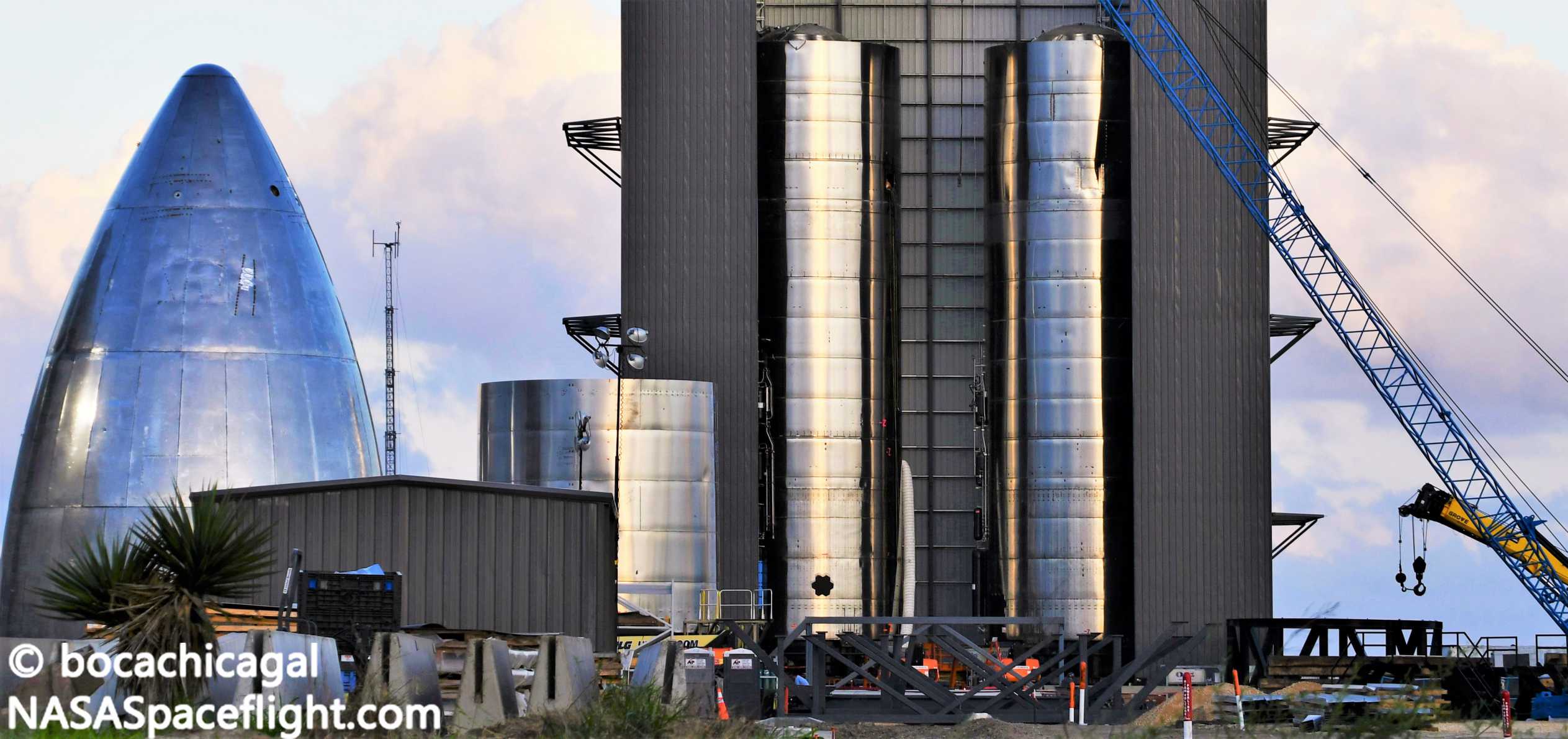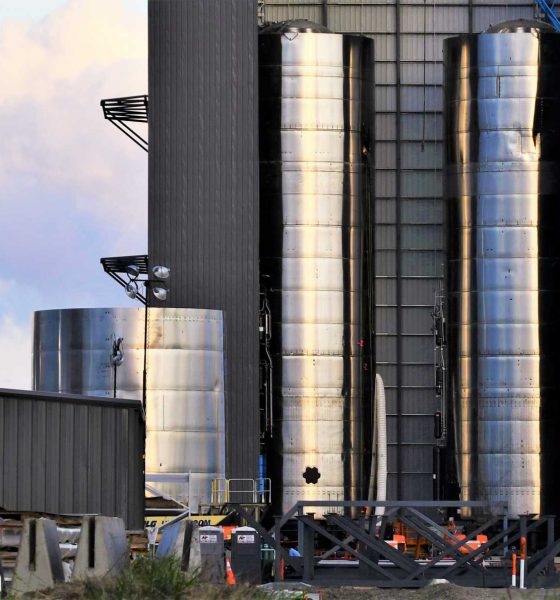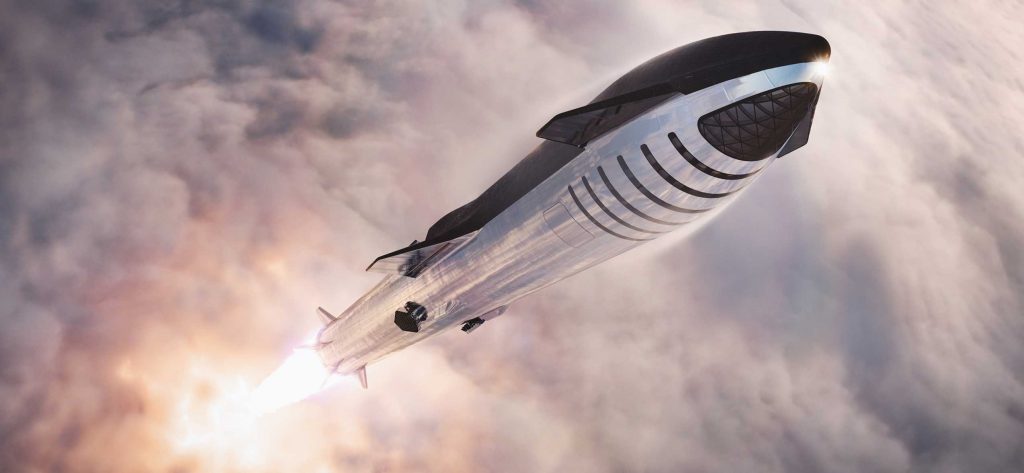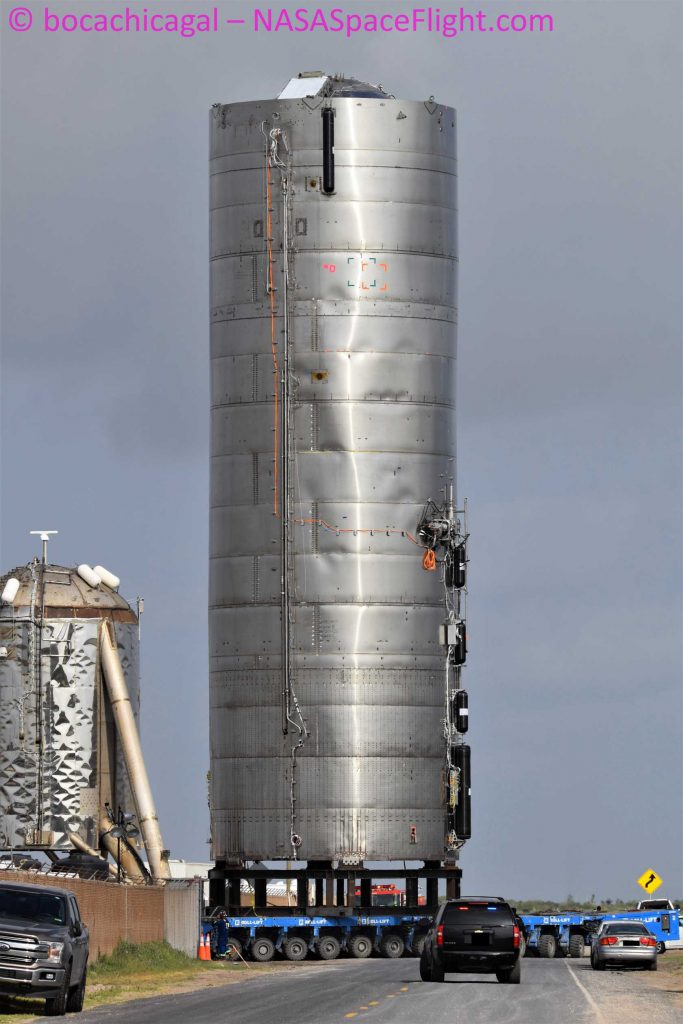

News
SpaceX Starship event expected this September, says Elon Musk
SpaceX CEO Elon Musk has implied that he will continue the tradition of annual Starship update events later this year, likely presenting on the progress the company has made over the last 12 months at its South Texas rocket factory.
Beginning in Guadalajara, Mexico at the September 2016 International Astronautical Congress (IAC), Musk has presented a detailed annual update on the status of SpaceX’s next-generation Starship launch vehicle in September or October for the last four years. Formerly known as the Interplanetary Transport System (ITS) and Big Falcon Rocket (BFR), Starship is effectively a continuation of the unprecedented progress SpaceX has made with Falcon 9 and Heavy reusability.
SpaceX has managed to reliably reuse Falcon boosters 5+ times and is on the way to replicating that with payload fairings, but Musk has concluded that the Falcon family – despite being some of the largest operational rockets in existence – is just too small to feasibly recover and reuse the orbital second stage. With Starship, SpaceX wants to take a slightly different approach.

While also a two-stage rocket, Starship will have a magnitude more thrust than Falcon 9 and twice the thrust of Saturn V, the largest liquid rocket ever successfully launched. More importantly, both Starship stages are designed to be easily and rapidly reusable, while also entirely getting rid of deployable payload fairings. In theory, once fully optimized, Starship and the Super Heavy booster should be capable of placing 150 metric tons (~330,000 lb) of payload into low Earth orbit (LEO) in a single launch.
Of course, that is going to be an immense challenge – arguably the single most ambitious project in the history of commercial spaceflight – and SpaceX has quite a ways to go before it can even come close. Aside from the huge publicity and excitement it generates, offering detailed explanations of how exactly SpaceX is progressing towards those goals and how Starship’s design is evolving is likely the primary reason Musk has chosen to continue doing annual presentations.
SpaceX may likely be years away from routine, fully-reusable Starship launches but that doesn’t mean that no progress has been made. In the last ~10 months, SpaceX has successfully flown Starhopper to 150 meters (500 ft), destroyed Starship Mk1; built, tested, and destroyed Starships SN1, SN3, SN4, and four standalone test tanks; and expanded its South Texas presence from almost nothing to a large, semi-permanent factory.
Aside from Starship production and testing, SpaceX has evolved the cutting-edge Raptor engine from a relatively rough prototype to an engine capable of operating at the fringes of what thermodynamics will allow. Per Musk, a vacuum-optimized variant of the existing Raptor engine may already be preparing for its first test fires in McGregor, Texas. Meanwhile, SpaceX won its first Starship contract from NASA a matter of weeks ago, solidifying the ambitious rocket’s stature relative to other more traditional next-generation rockets from Blue Origin and the United Launch Alliance (ULA).

All things considered, there is an extraordinary amount of tangible progress on tap for the Starship update Musk says is planned for September. With a little luck, the 2020 presentation will align with Starship’s test program much like the 2019 event did with Starhopper, coming just a few months after ambitious flight tests.
Check out Teslarati’s Marketplace! We offer Tesla accessories, including for the Tesla Cybertruck and Tesla Model 3.

News
Tesla (TSLA) receives “Buy” rating and $551 PT from Canaccord Genuity
He also maintained a “Buy” rating for TSLA stock over the company’s improving long-term outlook, which is driven by autonomy and robotics.

Canaccord Genuity analyst George Gianarikas raised his Tesla (NASDAQ:TSLA) price target from $482 to $551. He also maintained a “Buy” rating for TSLA stock over the company’s improving long-term outlook, which is driven by autonomy and robotics.
The analyst’s updated note
Gianarikas lowered his 4Q25 delivery estimates but pointed to several positive factors in the Tesla story. He noted that EV adoption in emerging markets is gaining pace, and progress in FSD and the Robotaxi rollout in 2026 represent major upside drivers. Further progress in the Optimus program next year could also add more momentum for the electric vehicle maker.
“Overall, yes, 4Q25 delivery expectations are being revised lower. However, the reset in the US EV market is laying the groundwork for a more durable and attractive long-term demand environment.
“At the same time, EV penetration in emerging markets is accelerating, reinforcing Tesla’s potential multi‑year growth runway beyond the US. Global progress in FSD and the anticipated rollout of a larger robotaxi fleet in 2026 are increasingly important components of the Tesla equity story and could provide sentiment tailwinds,” the analyst wrote.
Tesla’s busy 2026
The upcoming year would be a busy one for Tesla, considering the company’s plans and targets. The autonomous two-seat Cybercab has been confirmed to start production sometime in Q2 2026, as per Elon Musk during the 2025 Annual Shareholder Meeting.
Apart from this, Tesla is also expected to unveil the next-generation Roadster on April 1, 2026. Tesla is also expected to start high-volume production of the Tesla Semi in Nevada next year.
Apart from vehicle launches, Tesla has expressed its intentions to significantly ramp the rollout of FSD to several regions worldwide, such as Europe. Plans are also underway to launch more Robotaxi networks in several more key areas across the United States.
News
Waymo sues Santa Monica over order to halt overnight charging sessions
In its complaint, Waymo argued that its self-driving cars’ operations do not constitute a public nuisance, and compliance with the city’s order would cause the company irreparable harm.

Waymo has filed a lawsuit against the City of Santa Monica in Los Angeles County Superior Court, seeking to block an order that requires the company to cease overnight charging at two facilities.
In its complaint, Waymo argued that its self-driving cars’ operations do not constitute a public nuisance, and compliance with the city’s order would cause the company irreparable harm.
Nuisance claims
As noted in a report from the Los Angeles Times, Waymo’s two charging sites at Euclid Street and Broadway have operated for about a year, supporting the company’s growing fleet with round-the-clock activity. Unfortunately, this has also resulted in residents in the area reportedly being unable to sleep due to incessant beeping from self-driving taxis that are moving in and out of the charging stations around the clock.
Frustrated residents have protested against the Waymos by blocking the vehicles’ paths, placing cones, and “stacking” cars to create backups. This has also resulted in multiple calls to the police.
Last month, the city issued an order to Waymo and its charging partner, Voltera, to cease overnight operations at the charging locations, stating that the self-driving vehicles’ activities at night were a public nuisance. A December 15 meeting yielded no agreement on mitigations like software rerouting. Waymo proposed changes, but the city reportedly insisted that nothing would satisfy the irate residents.
“We are disappointed that the City has chosen an adversarial path over a collaborative one. The City’s position has been to insist that no actions taken or proposed by Waymo would satisfy the complaining neighbors and therefore must be deemed insufficient,” a Waymo spokesperson stated.
Waymo pushes back
In its legal complaint, Waymo stated that its “activities at the Broadway Facilities do not constitute a public nuisance.” The company also noted that it “faces imminent and irreparable harm to its operations, employees, and customers” from the city’s order. The suit also stated that the city was fully aware that the Voltera charging sites would be operating around the clock to support Waymo’s self-driving taxis.
The company highlighted over one million trips in Santa Monica since launch, with more than 50,000 rides starting or ending there in November alone. Waymo also criticized the city for adopting a contentious strategy against businesses.
“The City of Santa Monica’s recent actions are inconsistent with its stated goal of attracting investment. At a time when the City faces a serious fiscal crisis, officials are choosing to obstruct properly permitted investment rather than fostering a ‘ready for business’ environment,” Waymo stated.
News
Tesla FSD v14.2.2 is getting rave reviews from drivers
So far, early testers have reported buttery-smooth drives with confident performance, even at night or on twisty roads.

Tesla Full Self-Driving (Supervised) v14.2.2 is receiving positive reviews from owners, with several drivers praising the build’s lack of hesitation during lane changes and its smoother decision-making, among others.
The update, which started rolling out on Monday, also adds features like dynamic arrival pin adjustment. So far, early testers have reported buttery-smooth drives with confident performance, even at night or on twisty roads.
Owners highlight major improvements
Longtime Tesla owner and FSD user @BLKMDL3 shared a detailed 10-hour impression of FSD v14.2.2, noting that the system exhibited “zero lane change hesitation” and “extremely refined” lane choices. He praised Mad Max mode’s performance, stellar parking in locations including ticket dispensers, and impressive canyon runs even in dark conditions.
Fellow FSD user Dan Burkland reported an hour of FSD v14.2.2’s nighttime driving with “zero hesitations” and “buttery smooth” confidence reminiscent of Robotaxi rides in areas such as Austin, Texas. Veteran FSD user Whole Mars Catalog also demonstrated voice navigation via Grok, while Tesla owner Devin Olsen completed a nearly two-hour drive with FSD v14.2.2 in heavy traffic and rain with strong performance.
Closer to unsupervised
FSD has been receiving rave reviews, even from Tesla’s competitors. Xpeng CEO He Xiaopeng, for one, offered fresh praise for FSD v14.2 after visiting Silicon Valley. Following extended test drives of Tesla vehicles running the latest FSD software, He stated that the system has made major strides, reinforcing his view that Tesla’s approach to autonomy is indeed the proper path towards autonomy.
According to He, Tesla’s FSD has evolved from a smooth Level 2 advanced driver assistance system into what he described as a “near-Level 4” experience in terms of capabilities. While acknowledging that areas of improvement are still present, the Xpeng CEO stated that FSD’s current iteration significantly surpasses last year’s capabilities. He also reiterated his belief that Tesla’s strategy of using the same autonomous software and hardware architecture across private vehicles and robotaxis is the right long-term approach, as it would allow users to bypass intermediate autonomy stages and move closer to Level 4 functionality.








